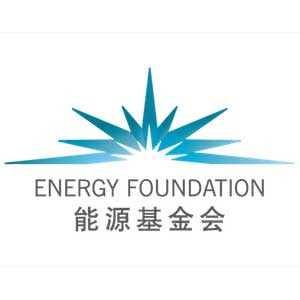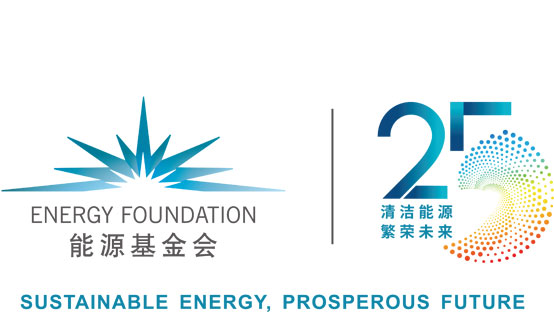Investment in Renewables Is an Engine for Accelerated Economic Growth
As a major developing country in a volatile world, China faces many challenges. China’s immediate priorities are to hold the line and make concentrated efforts to tame the pandemic, grow its economy, and improve people’s livelihoods—actions that will put China onto a trajectory toward a modern country.
China should not seek temporary economic relief regardless of the consequences. Investing in excess production capacities or sunk assets is a bad idea for boosting GDP in the short term, and goes against the country’s governance and development strategies. Its stimulus should stop relying on projects with high energy consumption and emissions. Instead, a new direction for investment and consumption will help forge a more powerful growth driver that is aligned with China’s longer-term development goals. In recent years, many provinces and cities have shown that the path of structural adjustment is promising. As China’s per capita GDP approaches the level of high-income economies, we should be confident in a green, low carbon growth for the country’s future.
Robust growth requires stable access to energy resources. Many have believed that economic prosperity is driven by an increase in low-cost energy consumption, which in turn leads to more carbon emissions; they have also believed that the objectives of affordable, secure, and clean energy cannot be achieved at the same time. That might be partially true when China was a low-income economy—and when technologies around the globe had not enjoyed the breakthroughs in the past decade or so. But now this false conviction will not find its future. Energy and tech innovations are ushering in an new era of industrial revolution, when economic growth, energy security, environmental improvement, and climate safety can be synchronized with each other, though not automatically. The era invites us to make a choice at a crossroads—a right choice will broaden the path to sustainable prosperity; while a wrong one will delay China’s modernization and weaken its competitiveness in the global future.
The crossroads is marked by the revolutionary changes in non-fossil fuels. In the past decade, the cost of renewable energy has dropped by 90%, their power generation efficiency has significantly improved, and huge progress has been made in their reliability and stability. These market changes are also backed by statistics: the proportion of non-fossil fuels in China’s primary energy consumption rose from 13% in 2016 to 15.9% in 2021; in terms of electricity production, non-fossil sources accounted for 30% in 2020; installed capacity of wind and photovoltaic power increased by 130 GW in 2021—indicating that renewables have been on the fast track in China, and their share in primary energy consumption is expected to be much higher than the current goal for 2030.
China’s annual investment in wind and photovoltaic energy for the past few years has been 500 to 600 billion RMB ($75 to 90 billion), a volume that has the potential to expand further with the help of macroeconomic policies. To establish a stable and safe power system dominated by renewables, energy storage should be put in place on power supply, electricity transmission, distribution network, and end user sides. Investment, of course, is essential in their deployment. For example, investing in pumped hydropower storage facilities is likely to leverage China’s existing dams across the country and accelerate high penetration of renewable energy in its power system.
Investment remains an indispensable driver for China’s economic growth. The question is, where the investment should go and how much is the return. Investing in green and low carbon sectors can sustain growth, we believe. An analysis by Energy Foundation China shows that during the 14th Five-Year Plan period of 2021–2025, the total investment potential is up to $6.7 trillion in sectors such as digitalization and green transformation of traditional industries, low carbon urbanization and city constructions, green consumption, and renewable-friendly energy and power systems. The annual investment potential stands at $1.3 trillion on average, or 16% of China’s total investment in 2021. Another analysis supported by Energy Foundation China reveals that direct investment toward carbon neutrality in China can add up to a total of at least $21 trillion by 2050. These findings suggest that carbon related investment can drive China’s economic growth both during the 14th Five-Year Plan period and over the next decades. Economic prosperity and the carbon neutrality transition are organically integrated.
Coal, as the bedrock of China’s energy structure today, needs a systematic arrangement for its future. The first step is to in the short term eliminate the so-called “scattered” use of coal by rural residents or small industrial boilers, which has contributed to the choking air in many regions despite its small quantity, and switch to natural gas, shallow geothermal energy, biomass, and other non-fossil fuels. In industrial sectors such as ferrous metallurgy, cement, building materials, chemicals, and petrochemicals, where coal is used as a feedstock, coordinated coal phase-out solutions should be applied, including digitalization, process optimization, efficiency improvement, fuel switching, demand reduction, and circular economy. Regarding the thermal coal, which is used to generate electricity and accounts for more than 55% of China’s total coal consumption, no new coal power capacity shall be added, nor the construction or expansion of coal mines, apart from efforts such as ultra-low emission retrofits and efficiency improvements of existing coal-fired power plants. The average age of coal-fired power units operating in China is 13 years, or 17 years away from profitable retirements. With declining power generation hours, many of the existing units can maintain stable operation in the next two decades, when renewable power generation will be more mature, reliable, and affordable, and thus replace them by late 2030s or early 2040s. Part of the existing coal power units can also be retrofitted for more flexibility or designated as back-up emergency capacity, and become a supplementary component of China’s new renewables-dominated power system. Huge investments are needed in the next five to 10 years, to kick-start this structural change and enable a robust rise in the share of non-fossil fuels in electricity supply over the next two decades. In the process, great strides should be made for each five-year plan periods.
To achieve carbon neutrality, China should accelerate the increase of renewables in its energy mix, while reducing its coal consumption with a phased approach. It should strive to meet 100% of its new energy or electricity demands with renewables as early as possible, and use the surplus to replace the existing coal. In brief, the pathway for China’s transition toward carbon neutrality lies in accelerating the deployment of non-fossil energy and the establishment of a renewables-dominated power system that integrates energy sources, grids, load, storage, and consumers.
While decarbonizing the power sector, China should also electrify its energy-use sectors such as industry, buildings, and transportation. Compatible electrical grids, as well battery charging and swapping infrastructure, will bring new investment and consumption opportunities. In the recent two years, China’s booming electric vehicle market has contributed to a stable GDP growth from the perspectives of both investment and consumption.
In order to unleash the investment potential, China needs to break the policy bottlenecks. Firstly, more specific emission targets should be set, providing investors and technology developers with stable long-term expectations. Secondly, a carbon pricing system should be completed, so that profits from carbon reductions can be gained by incentivized investors and developers through a carbon price significantly higher than the marginal cost of carbon mitigations. Other “value transfer” tools can be considered too, such as granting a franchise to carbon investors, if carbon pricing does not move fast enough. In this way, a “green is gold” mechanism will be established.
With the rapid expansion of green electricity and electric vehicles, China will significantly cut the oil consumption of its transport sector, thus reducing the dependence on oil imports. This will help ease the pressure on energy security.
To sum up, investing in non-fossil energy such as wind and solar is a multi-win strategy, which will foster economic growth, energy security, energy structure decarbonization, environmental improvement, and a safe climate in China. It is essential that China resolves to make the investment during the 14th Five-Year Plan period and beyond.




